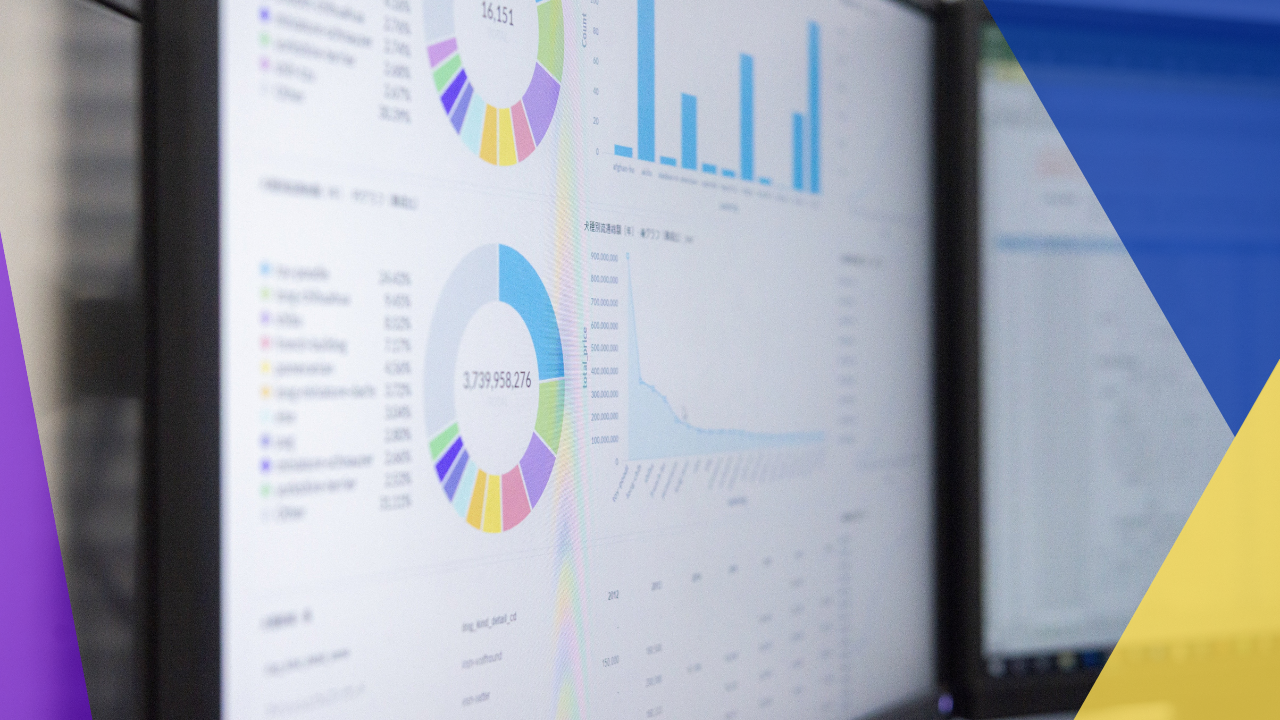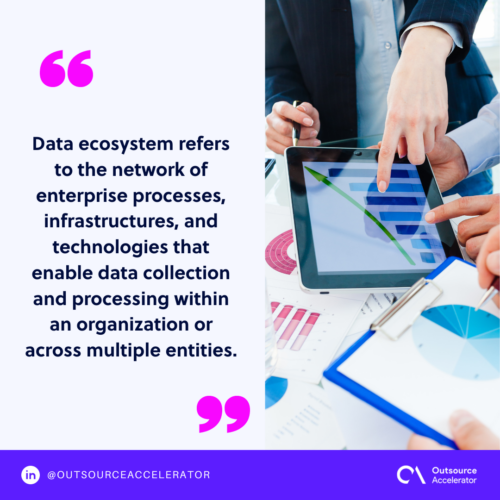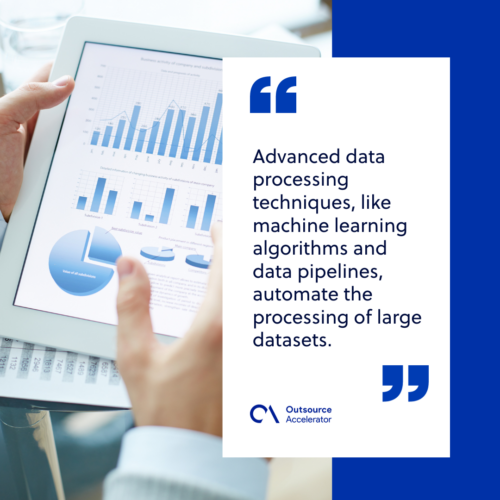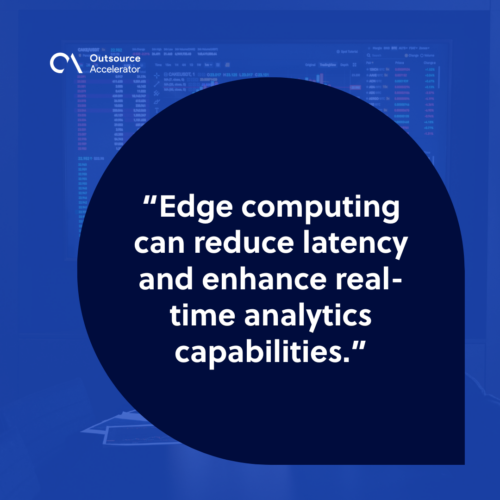Data ecosystem and its components

Data significantly shapes how businesses operate, make decisions, and drive innovation in our interconnected world.
When hearing about the “data ecosystem,” spreadsheets and databases are some aspects that come to mind for most people. These tools are only a portion of the entire ecosystem’s composition.
Understanding the data ecosystem is crucial for data analysts and teams to leverage their data effectively.
What is a data ecosystem?
Data ecosystem refers to the network of enterprise processes, infrastructures, and technologies that enable data collection and processing within an organization or across multiple entities.
It encompasses many components, including data sources, platforms, tools, and personnel, all working together to create value from data.
Data ecosystem is more known today as a technology stack.

Benefits of the data ecosystem
Implementing a robust data ecosystem brings various benefits to organizations.
- A well-designed ecosystem allows for more efficient and accurate data collection.
- With readily available and properly organized data, firms can identify patterns and trends and make informed strategic choices.
- A data ecosystem can foster information sharing among business units or stakeholders.
- By breaking down data silos and integrating diverse data sources, organizations can gain a holistic view of their operations, customers, and market landscape.
- Data ecosystem facilitates innovative solutions, improved customer experiences, and increased agility in responding to changing market conditions.
5 components of a data ecosystem
To comprehensively understand the data ecosystem, it is essential to be familiar with its key components.
1. Data sources
Data sources form the foundation of any data ecosystem. These can include internal sources like customer databases and external sources like social media feeds, market research reports, or public data repositories.
A diverse range of data sources gives organizations a broader perspective and richer insights.
2. Data storage and infrastructure
Efficient data storage and infrastructure are crucial components of a data ecosystem. This involves choosing the right databases, data warehouses, and cloud computing solutions to manage and store large volumes of data securely.
Advanced technologies such as distributed storage systems and cloud-based platforms enable organizations to scale and process data more effectively.
3. Data processing
Data integration and processing combine data from various sources and transform it into actionable insights. It involves data cleaning, normalization, and integration to ensure consistency and accuracy.
Advanced data processing techniques, like machine learning algorithms and data pipelines, automate the processing of large datasets.

4. Analysis and visualization
Data analysis and visualization tools allow teams to gain meaningful insights from data and convert them into visual reports.
With the help of statistical analysis, data mining, and visualization techniques, organizations can uncover patterns, correlations, and trends that might otherwise go unnoticed.
Exploring data through interactive visualizations and intuitive dashboards enables teams to grasp complex information quickly.
5. Data governance and security
Data governance and security ensure that data is managed ethically, securely, and in compliance with relevant regulations.
Implementing robust data governance policies and frameworks helps organizations maintain data integrity, protect sensitive information, and establish stakeholder trust.
This becomes increasingly important as the volume and complexity of data continue to grow.
How to create a data ecosystem
Creating a data ecosystem requires careful planning and implementation. Here are some key steps to consider:
1. Define your objectives and use cases
Identify the specific business objectives you want to achieve through your data ecosystem.
Whether improving operational efficiency, optimizing marketing campaigns, or enhancing customer experiences, clear goals will guide your data strategy and architecture.
2. Assess your existing data infrastructure
Evaluate your current data infrastructure to identify strengths, weaknesses, and gaps. This includes assessing data quality, data integration capabilities, and existing technology stack.
Understanding your starting point will help you prioritize investments and determine the necessary upgrades or changes.
3. Select the right tools and technologies
Choose the tools and technologies that suit your organization’s objectives. You may invest in data management platforms, analytics tools, and visualization software.
Consider factors such as scalability, ease of use, integration, and vendor reputation when choosing your tools.
Future developments in data ecosystems
The data ecosystem will evolve to meet emerging needs and challenges as technology advances.
Some future developments that can affect the data ecosystem include the following:
Artificial intelligence and machine learning
AI and ML will significantly automate data analysis, uncover insights, and improve decision-making processes. Algorithms will become smarter, enabling more accurate predictions and recommendations.
Edge computing
The proliferation of edge devices and IoT will create new challenges and opportunities in managing and processing data at the network’s edge.
Edge computing can reduce latency and enhance real-time analytics capabilities.

Data privacy and ethical considerations
Organizations must prioritize ethical data collection to protect their customers’ privacy and safety online. This involves implementing strong data governance frameworks and respecting user consent.
Data democratization
The trend of making data accessible to a broader range of users will continue to grow.
More organizations will empower their employees with self-service analytics tools, enabling them to explore and analyze data independently.
With ongoing technological advancements, the data ecosystem will continue to evolve, presenting new opportunities and challenges.







 Independent
Independent




